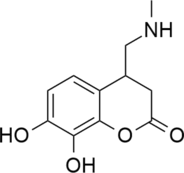Role of copper chelating agents: between old applications and new perspectives in neuroscience
- PMID: 38886940
- PMCID: PMC11433910
- DOI: 10.4103/NRR.NRR-D-24-00140
Role of copper chelating agents: between old applications and new perspectives in neuroscience
Abstract
The role of copper element has been an increasingly relevant topic in recent years in the fields of human and animal health, for both the study of new drugs and innovative food and feed supplements. This metal plays an important role in the central nervous system, where it is associated with glutamatergic signaling, and it is widely involved in inflammatory processes. Thus, diseases involving copper (II) dyshomeostasis often have neurological symptoms, as exemplified by Alzheimer's and other diseases (such as Parkinson's and Wilson's diseases). Moreover, imbalanced copper ion concentrations have also been associated with diabetes and certain types of cancer, including glioma. In this paper, we propose a comprehensive overview of recent results that show the importance of these metal ions in several pathologies, mainly Alzheimer's disease, through the lens of the development and use of copper chelators as research compounds and potential therapeutics if included in multi-target hybrid drugs. Seeing how copper homeostasis is important for the well-being of animals as well as humans, we shortly describe the state of the art regarding the effects of copper and its chelators in agriculture, livestock rearing, and aquaculture, as ingredients for the formulation of feed supplements as well as to prevent the effects of pollution on animal productions.
Copyright © 2025 Copyright: © 2025 Neural Regeneration Research.
Conflict of interest statement
Figures



















References
-
- Agarwal K, Sharma A, Talukder G. Effects of copper on mammalian cell components. Chem Biol Interact. 1989;69:1–16. - PubMed
-
- Aguirre P, García-Beltrán O, Tapia V, Muñoz Y, Cassels BK, Núñez MT. Neuroprotective effect of a new 7,8-dihydroxycoumarin-based Fe2+/Cu2+ chelator in cell and animal models of Parkinson’s disease. ACS Chem Neurosci. 2017;8:178–185. - PubMed
-
- Akatsu H, Hori A, Yamamoto T, Yoshida M, Mimuro M, Hashizume Y, Tooyama I, Yezdimer EM. Transition metal abnormalities in progressive dementias. Biometals. 2012;25:337–350. - PubMed
LinkOut - more resources
Full Text Sources

